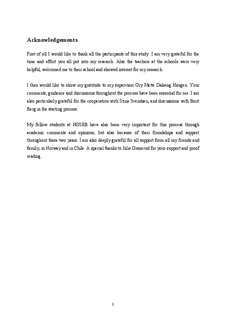| dc.description.abstract | The right to education for young immigrants above 16 years of age with a need for Norwegian
courses and primary/lower secondary education, falls under the responsibility of the
municipalities in Norway. This education is generally taken care of by the local Adult
Education. However, there are no clear guidelines on how the education for the young
immigrants should be organized, which creates many different ways of organizing the
education in Norway's many municipalities. I have therefore, through semi-structured and
focus group interviews, conducted my research with young immigrants in three different
municipalities. As a result I have obtained experiences from adolescents experiencing three
ways of organizing this education: the first was organized at the local Adult Education but in
a building for adolescents only, the second was also organized at the local Adult Education,
however at this school both adolescents and adults attended the same school. The third school
was located at the local Upper Secondary School.
It became apparent that the way the schools were organized affected the adolescents' everyday
life at school. Space appeared as an important topic for the participants. Some of the topics
that were highlighted by the participants were: The significance of getting to know
Norwegian peers, and the significance of learning the Norwegian language. In this case they
also emphasized how knowing Norwegians is vital for their language learning. Also being
able to feel that they attend a 'normal' school was emphasized by several participants. And
finally, whether the school is located with adults or adolescents, and with only foreigners or
Norwegians, was a repeated issue during the interviews.
In the last part of the analysis I discuss these themes, and to what extent the adolescents,
through their experiences, may be said to have the opportunity to act as citizens in Norway.
However, the data has shown that the young immigrants meet various challenges, and that
practicing their citizenship therefore may be challenging. These are complex questions,
however my aim is that this thesis may contribute with more insight for the topic on young
immigrants and the way their education is organized. | nb_NO |
